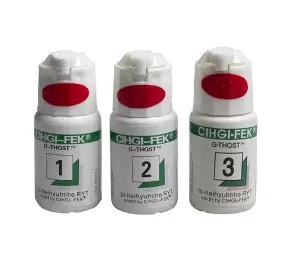Retraction Cord
Free!
Retraction cord is a braided or knitted strand placed in the sulcus to gently move gingiva and control moisture. It exposes margins for precise impressions and clean digital scans, reducing remakes and chair time. Use it for crowns, veneers, inlays, and Class V restorations. Choose a color-coded size, add a hemostatic if needed, and get predictable tissue management at a low cost.
Description
Retraction cord is a small braided or knitted strand used to gently move the gingiva away from a prepared tooth. Placed into the sulcus with a cord packer, it creates a dry, accessible margin so you can capture details with impression material or an intraoral scanner. Many cords are used plain or with a hemostatic agent such as aluminum chloride or ferric sulfate to control crevicular fluid and minor bleeding. Sizes are color coded to match narrow to wide sulci and to support single- or double-cord techniques.
Key features and benefits:
-
Mechanical tissue displacement exposes finish lines for accurate impressions and scans.
-
Works with common hemostatic solutions to manage moisture and bleeding.
-
Braided or knitted construction resists fraying and stays where you place it.
-
Color-coded sizes help teams select the right thickness quickly.
-
Compatible with elastomeric impressions and digital workflows.
-
Cost-effective, reusable dispenser bottles keep the operatory organized.
Typical uses and applications:
-
Crown and bridge preparations before final impressions or digital scans.
-
Veneer and inlay/onlay cases to reveal subgingival margins.
-
Class V restorations where moisture control is critical.
-
Cementation appointments to re-expose margins and improve cleanup.
How it compares:
-
Versus retraction paste alone, cord provides firmer, circumferential displacement and predictable hemostasis, especially at deep or uneven margins.
-
Versus electrosurgery or lasers, cord is non-invasive, economical, and requires no equipment; however, advanced methods may be preferred for persistent bleeding or hyperplastic tissue.
Clinical notes:
-
Choose the smallest size that displaces tissue without trauma.
-
If using cords with vasoconstrictors, follow local guidelines and patient contraindications.
-
Rinse hemostatic residue before impression or scanning to avoid surface inhibition.




